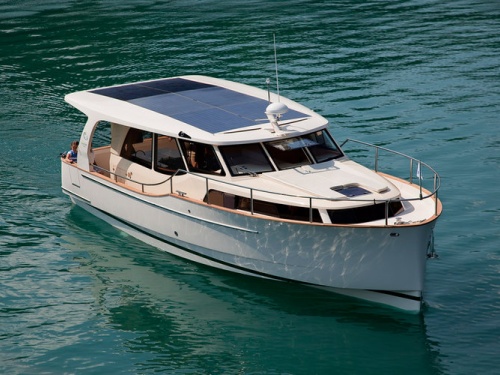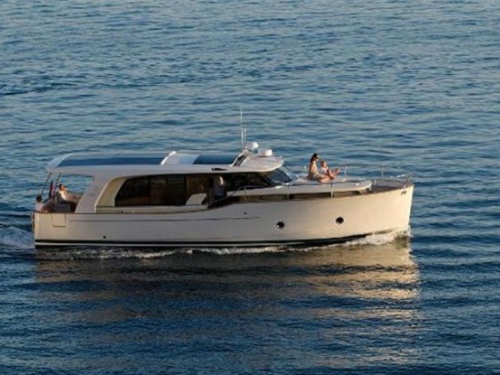Access More Boat Tests
Already have an account? Login
By submitting this form, you acknowledge that you have read and agree with the Privacy Policy & Terms of Use of BoatTEST.com.
Greenline 39 Solar (2018-)
1 x 370-hp Yanmar
Price
See the price by becoming
a BoatTEST member.
Members Must Log In
Brief Summary
The Greenline 39 Solar is a versatile cruiser that uses what the builder calls its proprietary “hybrid hull design” to offer stability and efficiency at a range of speeds. The boat we tested – the Greenline 39 Solar – is not equipped with the hybrid propulsion system but instead with a single 370-hp Yanmar diesel. Still, the builder’s experience with hybrid systems and Lithium Polymer batteries shows up in the company’s inventive power-management systems.

